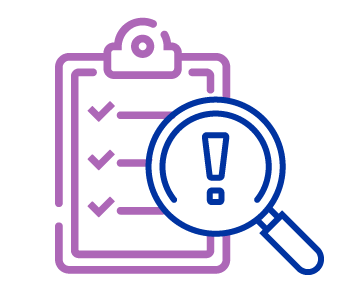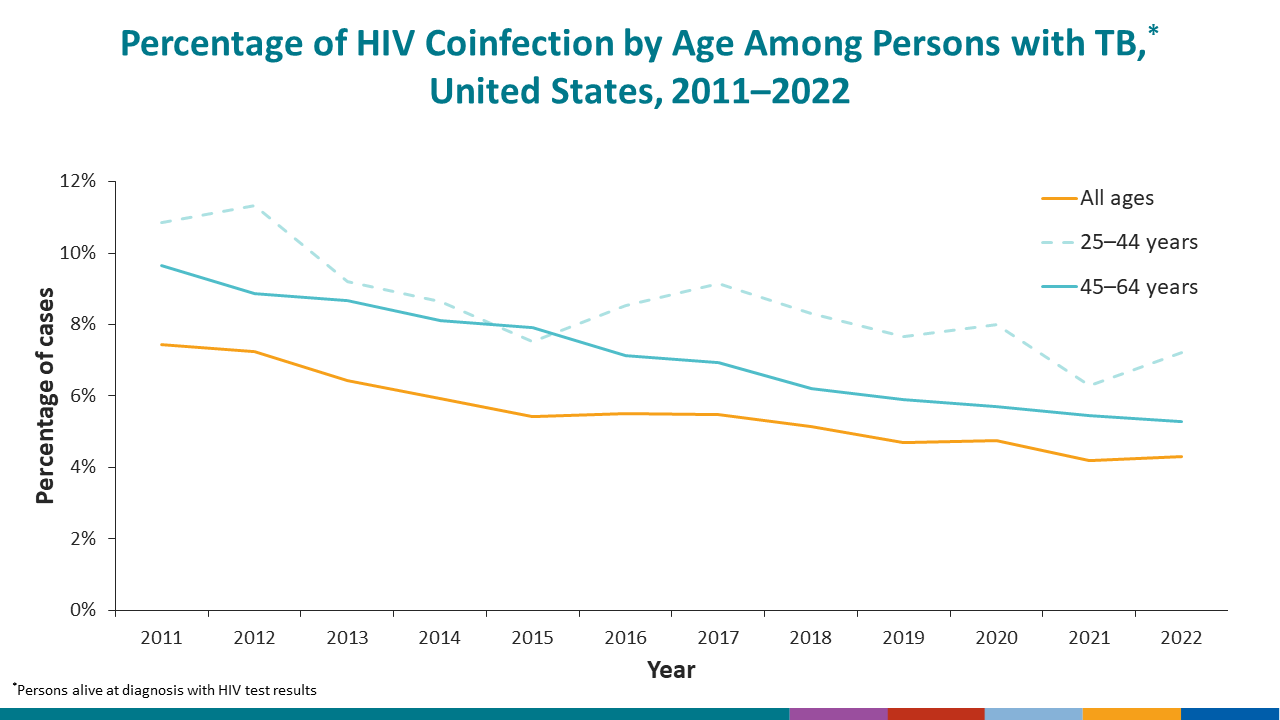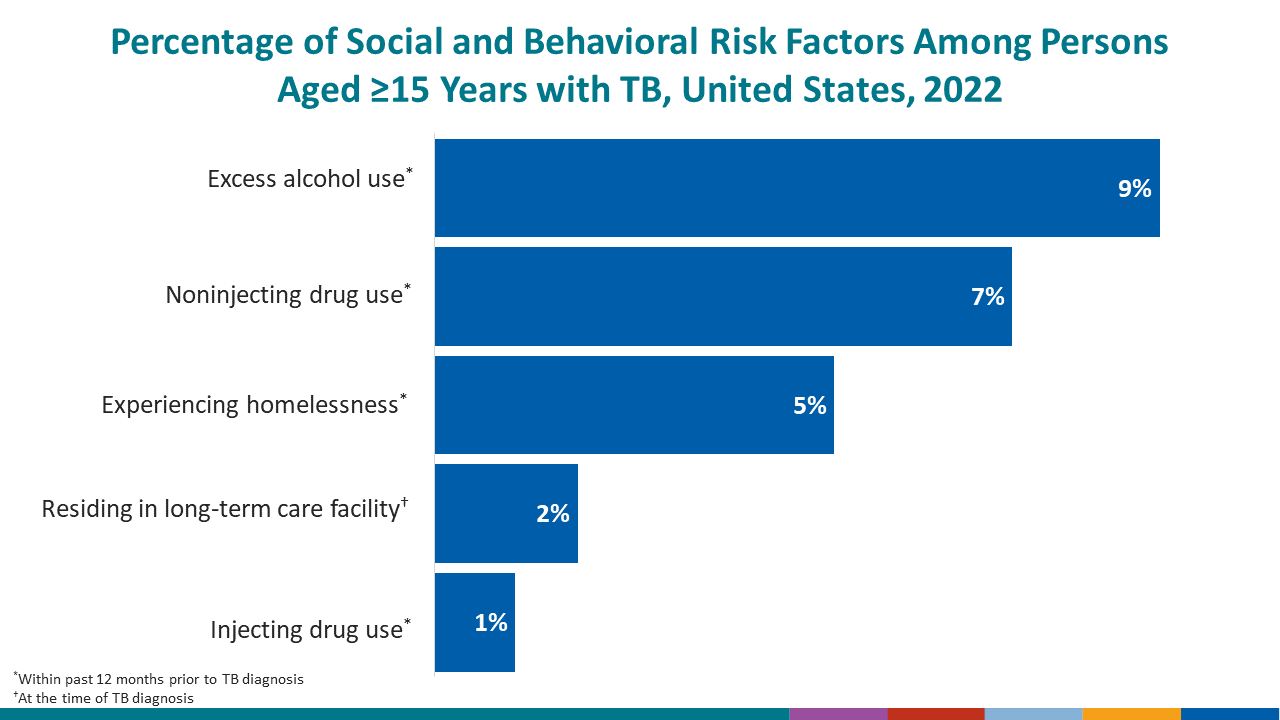Reported Tuberculosis in the United States, 2022
Risk Factors
Some people are at greater risk of TB disease compared with others. CDC analyzes selected factors that increase a person’s risk of becoming infected with TB bacteria or developing TB disease if infected.
People with medical conditions that weaken the immune system are at higher risk of developing TB disease if infected.
Diabetes mellitus
TB disease is a serious health threat, especially for persons with diabetes.
In 2022, diabetes mellitus was the most commonly reported medical risk factor among persons with TB disease (about one-quarter). More non-U.S.–born persons (26.9%) reported having diabetes mellitus compared with U.S.-born persons (17.1%).
Human immunodeficiency virus (HIV)
Coinfection with HIV is a major risk factor for persons with latent TB infection to develop TB disease.
Among persons with TB disease during 2022 who were alive at diagnosis and had documented HIV results, 4.3% had HIV coinfection.
During 2022, 7.2% of persons aged 25–44 years and 5.3% of persons aged 45–64 years had HIV coinfection, among persons with TB disease during 2022 who were alive at diagnosis and had documented HIV results.
TB bacteria spread through the air from one person to another. Many congregate settings have shared airspaces and poor ventilation, which can increase a person’s exposure to TB bacteria and enable the spread of TB bacteria. People experiencing homelessness also face challenges accessing medical care that can delay diagnosis and disrupt treatment.
Residents of long-term care facilities
During 2022, 1.8% of persons 15 years of age or older were residents of a long-term care facility at the time of TB diagnosis compared with 1.5% in 2021.
People experiencing homelessness
Among persons 15 years of age or older with TB disease during 2022, 5.0% reported experiencing homelessness within the 12 months prior to TB diagnosis compared with 4.5% in 2021.
Substance use is also a risk factor for TB disease. It can have physiological effects that increase a person’s risk for TB but is often a proxy for other epidemiologically important factors that increase exposure to TB. Substance use can also present a barrier to TB diagnosis and treatment, which increases a person’s infectiousness and the risk of spreading TB to others.
During 2022, the most commonly reported types of substance use among persons 15 years of age or older with TB disease were
- Excess alcohol use, 9.1%
- Noninjecting drug use, 7.2%
- Injecting drug use, 1.0%
Learn more in the Executive Commentary.



